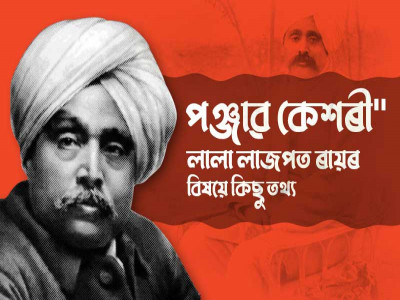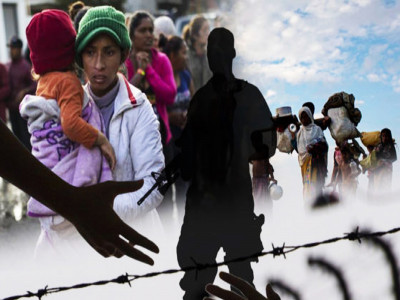
26/11 Mumbai Attacks: Unmasking the Men, the Machinery, and the State Behind India’s Darkest Night
On 26 November 2008, ten young men from Pakistan waged a war on India’s financial capital. What followed over the next 60 hours left 166 dead, more than 300 wounded, and iconic landmarks scorched; it was not just an act of terrorism but a geopolitical playbook in motion. Seventeen years later, the brutality is remembered, but the machinery that planned it remains insufficiently punished, deliberately obscured, or politically shielded.
The David Headley Factor: The Insider Who Made the Attack Possible
David Coleman Headley (born Dawood Gilani) was the most crucial external asset LeT ever recruited. He conducted a detailed reconnaissance of Mumbai targets, recorded videos later used in LeT training camps, identified the Chabad House as a Jewish target, scouted landing sites and escape routes, and provided LeT with real-time updates on security patterns.
His U.S. Network
Headley enjoyed unusual freedom of movement despite a criminal history. U.S. agencies have been criticized for not acting on Indian warnings about his suspicious visits.
His ISI Links
Headley testified that his ISI handlers, particularly “Major Iqbal”, gave him funds, direction, and protection.
The Ten Killers Who Landed in Mumbai
All ten attackers belonged to Lashkar-e-Taiba (LeT), a Pakistan-based terrorist organization. They travelled by sea from Karachi to Mumbai, hijacking the Indian trawler Kuber en route before splitting into pairs to attack multiple targets.
Identities of the Ten LeT Terrorists
1. Ajmal Amir Kasab - the lone attacker captured alive; executed in 2012.
2. Ismail Khan - Kasab’s partner; killed at Girgaum Chowpatty.
3. Abu Shoaib
4. Abu Umer
5. Hafiz Arshad
6. Javed
7. Abdul Rehman Bada
8. Abu Ali
9. Abu Akasha
10. Babar Imran
(Names derived from Kasab’s confession and Indian charge sheets.)
They were not “ideological warriors,” but young, unemployed men radicalized, trained, and deployed by LeT with full institutional backing.
The Minds Behind the Killers
Multiple investigations across India, the US, and Europe have pointed to a small but powerful group of planners:
1. Sajid Mir
2. Zaki-ur-Rehman Lakhvi
3. Hafiz Muhammad Saeed
4. Major Iqbal (alias “Iqbal Saeed” / “Chaudhary Iqbal”)
5. Major Sameer Ali
6. Abu al-Qama
Despite India producing extensive dossiers, Pakistan has prosecuted none effectively—many remain “missing,” “protected,” or quietly recycled into new roles.
When Did the Plot Begin? A Slow-Burning Operation
Contrary to popular belief, 26/11 was not a hastily planned assault. The operation grew gradually over a period of time. Between 2002 and 2005, David Headley attended LeT training camps: combat, navigation, reconnaissance, and counter-surveillance.
From 2006 to 2008, he made five major reconnaissance trips, conducting video surveys of:
● Taj Mahal Palace Hotel
● Oberoi Trident Hotel
● Chhatrapati Shivaji Terminus
● Leopold Café
● Nariman (Chabad) House
● Mumbai port & landing sites
LeT finalizes the plan; intensive training begins for the ten attackers. Marine combat training is added. And in November 2008, attackers depart Karachi in a hijacked boat; the operation begins. This timeline reveals a well-funded, globally coordinated project - not an isolated act.
Was ISI Involved? Evidence Says Yes. Pakistan Says No.
Pakistan has consistently insisted the attackers were “non-state actors.” But the weight of evidence suggests otherwise.
1. Testimony of David Headley
He repeatedly claimed he worked with ISI officers who supervised his reconnaissance missions.
2. Communication Intercepts
Indian agencies intercepted VOIP calls between handlers in Pakistan and attackers inside Mumbai. Voices identified include Sajid Mir and other LeT commanders.
3. Training Camps
Bootcamps used were LeT-ISI shared facilities in Pakistan-occupied Kashmir.
4. Dossiers Submitted to Pakistan and the UN
These included:
● GPS data
● Financial trails
● Satellite phone records
● Flowcharts of personnel within ISI and LeT
5. International Agencies’ View
Multiple global analyses (CIA, Europol, Indian NIA) consider ISI involvement “highly probable,” if not overtly proven at top-level command.
6. The Cover-Up
Pakistan initially denied the attackers were its citizens until Kasab’s identity was proven through village testimony in Faridkot, Punjab.
7. Sham Trials
Pakistan’s “trial” of Lakhvi has been repeatedly stalled, manipulated, or frozen, an indicator of political shielding.
Why 26/11 Still Matters Today
Many masterminds remain unpunished or protected. Pakistan has not dismantled the infrastructure that enabled the attack, and 26/11 continues to demonstrate the potency of hybrid warfare, combining terror, intelligence, maritime infiltration and cyber communication, offering lessons that remain central to India’s urban security doctrine.
Above all, 26/11 stands as a reminder that terrorism in South Asia cannot be separated from geopolitics. It lives within the nexus of militant groups, intelligence agencies, and state interests.
Justice Demands More Than Memory
Kasab was hanged, but the real architects of 26/11 are still operating behind new masks in Pakistan. Plotting new plans, brainwashing youth on both sides of the border. The ten young men who killed were products of an institutional ecosystem that continues to function. Unless that system is dismantled, the world will remain one miscalculation away from another 26/11. The victims deserve more than remembrance. They deserve accountability from individuals, organizations, and states.
Disclaimer: The opinions expressed in this article are those of the author's. They do not purport to reflect the opinions or views of The Critical Script or its editor.

Newsletter!!!
Subscribe to our weekly Newsletter and stay tuned.

















Related Comments